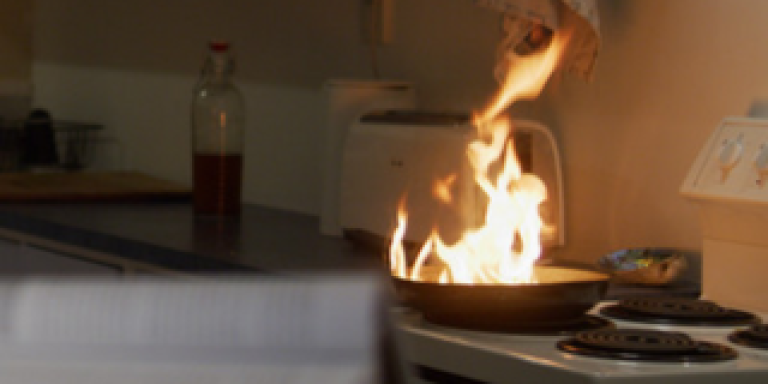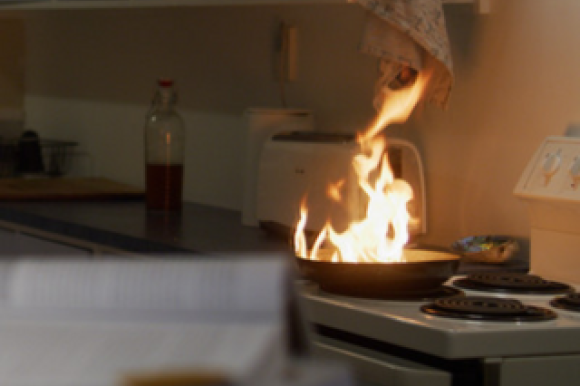Cooking
Did you know that 1 in 4 house fires start in the kitchen?
Making your kitchen fire safe is an important part of having a fire safe home. Here are some simple things you can do to reduce the risk of a fire starting in the kitchen.
Use this space to note any additional information about your escape plan, i.e. who will assist
Smoke is poisonous and more deadly than flames.
If you breathe smoke for more than a few breaths it can kill you.
A house fire can kill you in less than three minutes.
Don't spend time trying to save possessions.
A closed door buys you time.
It slows down the spread of fire, giving you more time to get to safety.
People have died by going back into a fire.
Don't leave the meeting place to go back inside for any reason.


Did you know that 1 in 4 house fires start in the kitchen?
Making your kitchen fire safe is an important part of having a fire safe home. Here are some simple things you can do to reduce the risk of a fire starting in the kitchen.
On this page
Another big danger in the kitchen is scalds — burns caused by boiling water.
Don't install a smoke alarm in your kitchen. Smoke and heat from cooking (and the toaster) can activate the alarm. Smoke alarms shouldn't be installed in the bathroom or laundry either.
You can still protect these areas with a heat alarm. A heat alarm is designed to activate when the room reaches a set temperature. They are useful in places where a smoke alarm would usually give false alarms.
For more information, take a look at our smoke alarm guide.